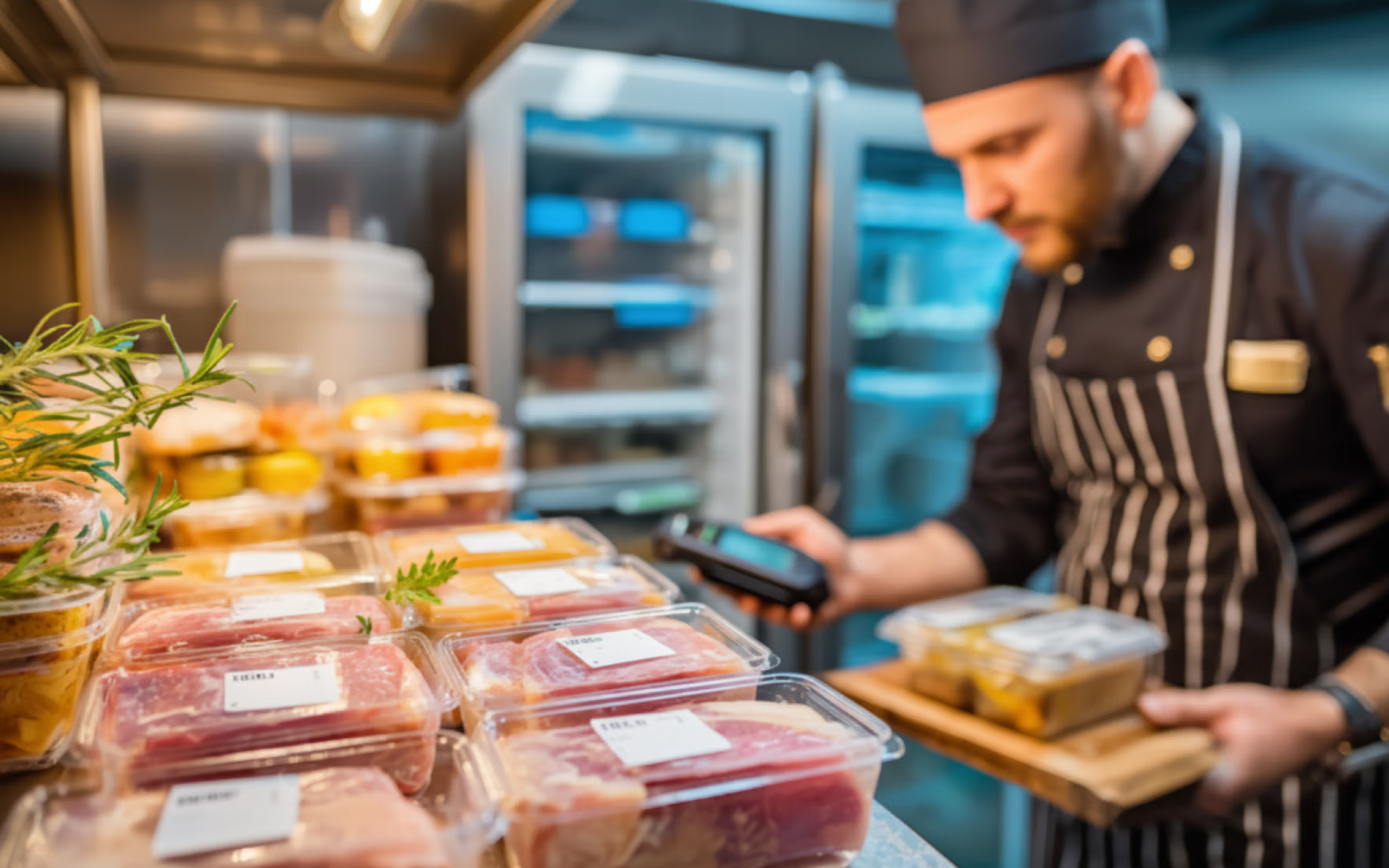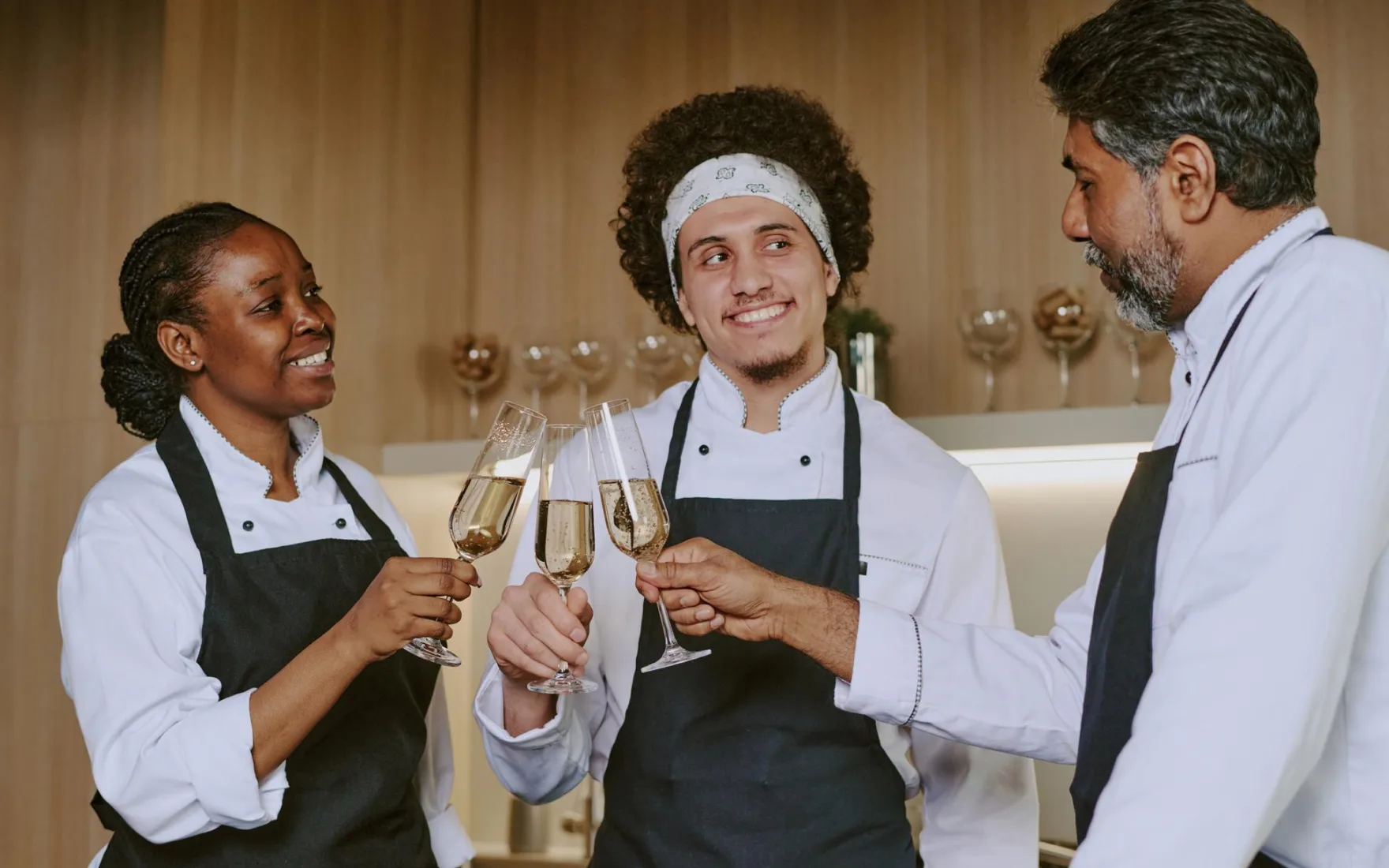A Guide to Restaurant Staff Dress Codes: Elevate Brand Image

There’s no doubt that presentation and first impressions matter. According to a research study done by the Textile Rental Services Association of America, employees in uniform are viewed to be more competent, approachable, and trustworthy. However, in the restaurant industry, where handling food is a common task, staff dress codes go beyond just aesthetics. A restaurant dress code also plays an essential role in ensuring health and safety among your staff and guests. Something as simple as an employee forgetting to wear non-slip shoes has the potential to cause absolute chaos.
In this guide, we’ll be exploring everything from what to include in your restaurant’s staff dress code to how to enforce it.
What is a Restaurant Dress Code?
A restaurant dress code is a set of rules that outline attire and grooming standards that employees are expected to follow while working. Uniforms would be included as part of a dress code, and depending on the restaurant, they could range from casual to formal.
What Should Be Included in a Restaurant Dress Code?
Now that we’ve covered the importance of a well-defined dress code, let’s explore the components of what should be included.
Basic Restaurant Dress Code Requirements
A polished and professional appearance is key for any restaurant staff. To ensure a clean and safe environment for both employees and customers, here are some basic factors and requirements to consider:
- Clothing that is comfortable to move in
- Clothing that is easy to clean
- Clothing that doesn’t show excessive sweat
- Clothing that won’t dangle over or fall into food (e.g. tassels, bell sleeves, etc.)
- Non-slip shoes

If you plan to implement a uniform policy in your restaurant, you can use this list to guide you throughout the design process. However, if your employees are allowed to wear their own clothing to work, this list can help them navigate what’s acceptable.
Grooming Standards
Beyond attire, maintaining a professional appearance extends to personal grooming. Here are some grooming standards to include:
- Fingernails should be kept short without polish
- Long hair should be pulled back or neatly braided to avoid falling into food
- Good overall personal hygiene must be maintained (e.g. personal cleanliness, oral hygiene, and use of products preventing body odor)
Personalized Appearance Factors
While attire and grooming standards are important, a well-defined dress code also considers individual style. Here are some personalized appearance factors to consider:
- Jewelry should be kept to a minimum, with no dangling pieces of jewelry permitted, as it can get in people’s food
- Body modifications, such as piercings, tattoos, and dyed hair, are at your discretion, depending on your brand image
Why is a Restaurant Dress Code Important?
Setting dress code standards can help maintain a cohesive brand image. If you have multiple restaurant locations, it can sometimes be a challenge to maintain consistency across all of them. A set dress code makes it easy for both staff and managers at all locations to know what type of attire is expected at work.
Not only does a staff dress code maintain a professional appearance, but it’s often required for health and safety. With the hustle and bustle of a restaurant, the kitchen can be a potentially hazardous place, and foreign objects can accidentally end up in food. Why take the risk of letting your staff wear dangling jewelry that could either get caught on something or get into someone’s food? Restaurant dress codes ensure that all staff are wearing appropriate attire and proper safety gear for both safety and hygiene purposes.

What is the Dress Code for a Restaurant Server?
A restaurant server’s dress code plays a dual role: maintaining professionalism and prioritizing hygiene. In terms of attire, it should overall be clean and wrinkle-free. If a uniform is required, all pieces of the uniform should be worn. If a uniform isn’t required, general dress code rules should be followed to properly reflect the brand image of the restaurant. Last on the list for attire are closed-toe, non-slip shoes that should be worn to prevent any slips in the kitchen. To maintain hygiene standards, hair should be neat, and minimal jewelry should be worn.
What is the Dress Code for a Restaurant Hostess?
The dress code for a restaurant hostess strikes a balance between professional and practical, as they often interact directly with guests. Similarly to servers, neat and well-maintained attire that reflects the restaurant’s brand image is required. For safety and hygiene, closed-toe, non-slip shoes and minimal jewelry should be worn to navigate the busy dining area safely. Depending on the restaurant, more upscale establishments may require more formal clothing for hostesses. Since the hostess is typically the first person a guest encounters, their dress code should reflect a welcoming and polished image.
What is the Dress Code for Cooks and Chefs?
When it comes to the dress code for cooks and chefs, the guidelines are typically more strict. This is because kitchen staff work very closely with hazardous cooking equipment. Implementing a strict dress code helps to ensure safety and prevent any cross-contamination. Cooks and chefs are usually expected to wear a chef coat, chef trousers, a head covering (e.g., chef hat or hairnet), an apron, and non-slip shoes. All of these garments work as protective equipment from any spills, contact with hot food, and slips.

How Can I Enforce a Restaurant Dress Code?
Now that you’ve created a dress code for your staff, the next step is to implement and enforce it. Some ways you can begin to incorporate a new dress code are:
- Determining what disciplinary action will be taken if dress code rules are broken (e.g. an employee will be sent home, 3 warnings before termination, etc.)
- Including the new dress code rules in onboarding for new staff
- Creating a lookbook or standard operating procedure (SOP) that outlines the new dress code rules and consequences for not following them
- Letting your existing staff know what will be expected of them going forward
- Ensuring that staff have easy access to the new lookbook to go back and refer to it whenever they need
Final Thoughts: Creating a Staff Dress Code for Your Restaurant
An effective restaurant dress code goes beyond just aesthetics. While a cohesive look can no doubt enhance your brand image, a dress code also plays an important role in prioritizing the health and safety of both staff and customers. Keep in mind that implementing clear guidelines and consistently enforcing your dress code allows you to cultivate a culture of accountability and compliance. Whether we like it or not, appearances can significantly impact first impressions. Not only does a polished and professional staff appearance set the tone in your restaurant, but it also contributes to exceptional dining experiences for your guests.
Tired of juggling schedules, payroll, and dress code worries? Push makes HR easy with our all-in-one people management system designed for restaurants. Book a demo to see just how effortless it can be.



